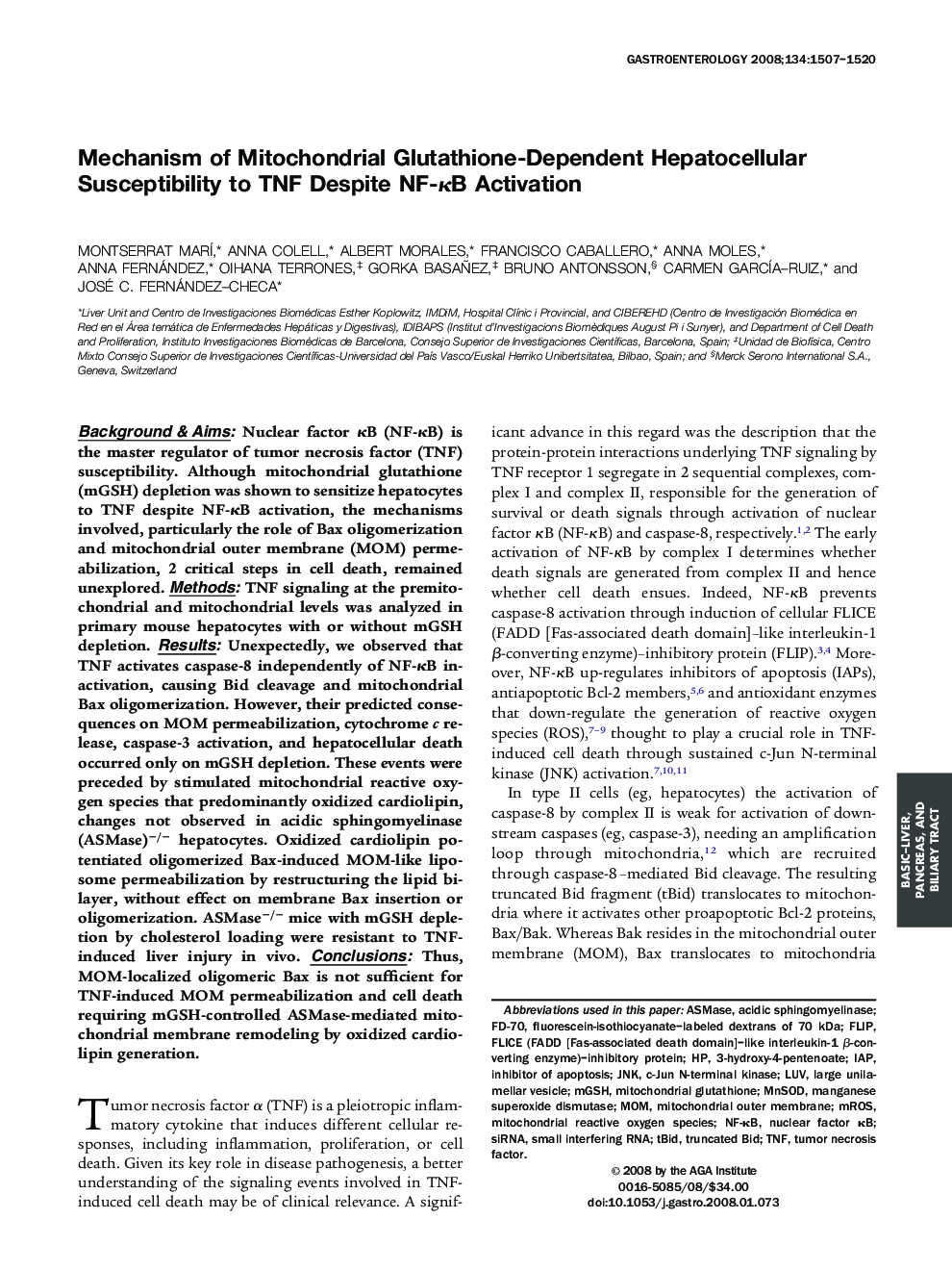| Article ID | Journal | Published Year | Pages | File Type |
|---|---|---|---|---|
| 6096913 | Gastroenterology | 2008 | 14 Pages |
Abstract
Background & Aims: Nuclear factor κB (NF-κB) is the master regulator of tumor necrosis factor (TNF) susceptibility. Although mitochondrial glutathione (mGSH) depletion was shown to sensitize hepatocytes to TNF despite NF-κB activation, the mechanisms involved, particularly the role of Bax oligomerization and mitochondrial outer membrane (MOM) permeabilization, 2 critical steps in cell death, remained unexplored. Methods: TNF signaling at the premitochondrial and mitochondrial levels was analyzed in primary mouse hepatocytes with or without mGSH depletion. Results: Unexpectedly, we observed that TNF activates caspase-8 independently of NF-κB inactivation, causing Bid cleavage and mitochondrial Bax oligomerization. However, their predicted consequences on MOM permeabilization, cytochrome c release, caspase-3 activation, and hepatocellular death occurred only on mGSH depletion. These events were preceded by stimulated mitochondrial reactive oxygen species that predominantly oxidized cardiolipin, changes not observed in acidic sphingomyelinase (ASMase)â/â hepatocytes. Oxidized cardiolipin potentiated oligomerized Bax-induced MOM-like liposome permeabilization by restructuring the lipid bilayer, without effect on membrane Bax insertion or oligomerization. ASMaseâ/â mice with mGSH depletion by cholesterol loading were resistant to TNF-induced liver injury in vivo. Conclusions: Thus, MOM-localized oligomeric Bax is not sufficient for TNF-induced MOM permeabilization and cell death requiring mGSH-controlled ASMase-mediated mitochondrial membrane remodeling by oxidized cardiolipin generation.
Keywords
TNFJnkMrOSASMaseMnSODmGSHFLIPIAPNF-κBc-Jun N-terminal kinaseSmall interfering RNAsiRNAacidic sphingomyelinaselarge unilamellar vesicletBidtruncated Bidmanganese superoxide dismutasemitochondrial outer membranetumor necrosis factornuclear factor κBLUVMoMinhibitor of apoptosismitochondrial glutathionemitochondrial reactive oxygen species
Related Topics
Health Sciences
Medicine and Dentistry
Gastroenterology
Authors
Montserrat MarÃ, Anna Colell, Albert Morales, Francisco Caballero, Anna Moles, Anna Fernández, Oihana Terrones, Gorka Basañez, Bruno Antonsson, Carmen GarcÃa-Ruiz, José C. Fernández-Checa,
